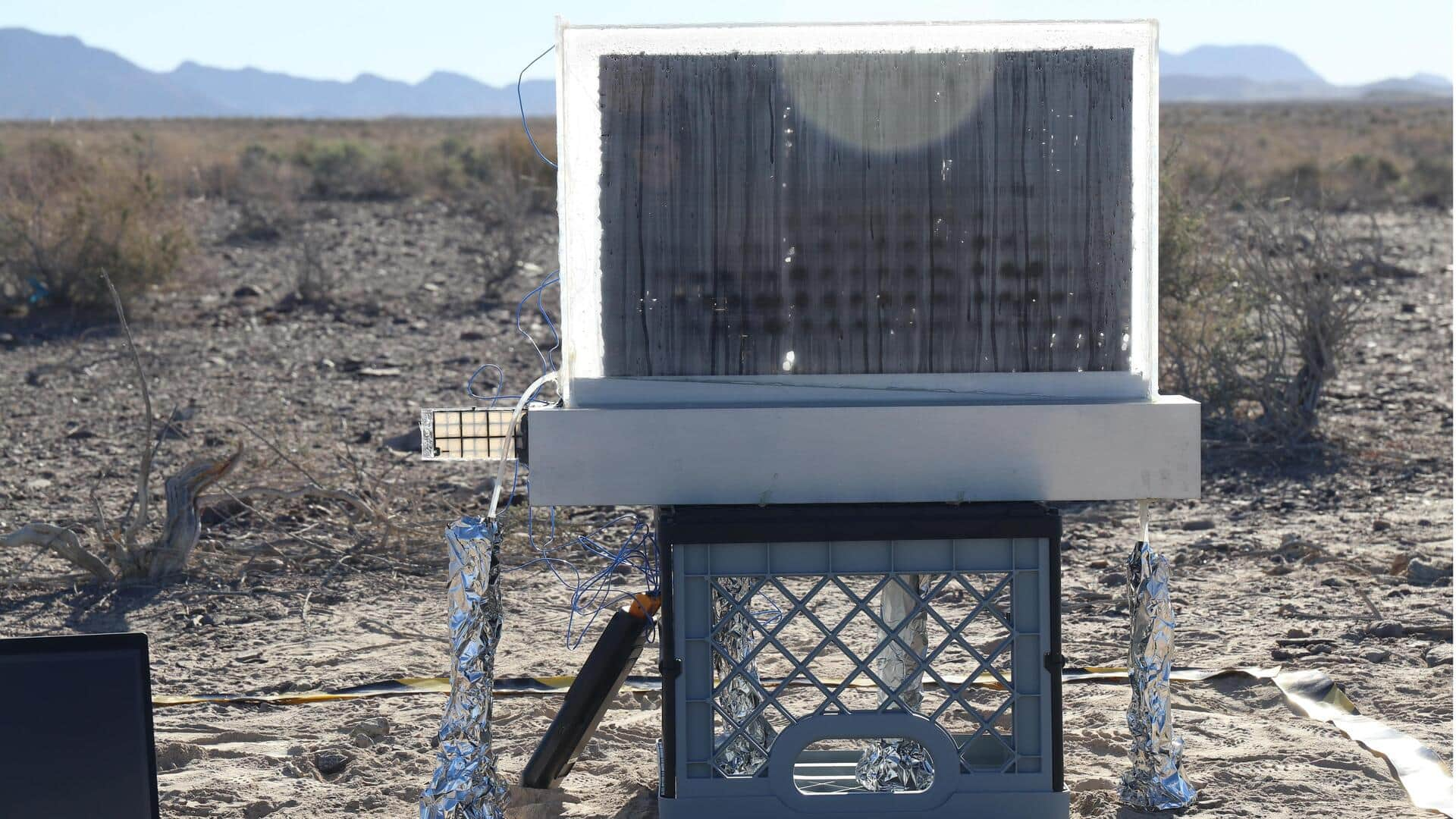
This device can extract drinking water from air without electricity
What's the story
Scientists at the Massachusetts Institute of Technology (MIT) have developed an innovative atmospheric water generator. The device can extract clean drinking water directly from the air without any external energy source. The breakthrough, detailed in a study published in Nature Water journal, could be a game-changer in tackling global water scarcity issues, especially in drought-prone areas with limited access to conventional water sources.
Working principle
Device generates up to 2.8-liter of water per day
The atmospheric water harvester employs a unique metal-organic framework (MOF) material that captures water vapor from the air through adsorption. The device runs on passive solar energy, making it completely sustainable and energy-independent. According to the MIT research team, the device can generate up to 2.8-liter of clean water per kilogram of MOF material every day, even in conditions with as low as 20% humidity.
Technological advancement
Innovative MOF material
The key innovation of this device lies in its specially designed MOF material. It consists of crystalline structures with tiny pores that attract and trap water molecules from the atmosphere. When heated by solar energy during the day, the MOF material releases the captured water, allowing the device to work continuously without electricity.
Potential impact
Game-changer for water-stressed communities
Professor Evelyn Wang, the lead researcher at MIT's Department of Mechanical Engineering, told BBC that this technology could be a game-changer for communities in water-stressed regions. The World Health Organization estimates that 2.2 billion people around the world lack safely managed drinking water services. This new tech could offer a sustainable solution for remote communities, disaster relief efforts, and climate change-affected areas.
Testing results
Field trials in Arizona
Field trials conducted under Arizona's desert conditions have shown the device's effectiveness in extremely arid environments. The clean water produced by the device meets WHO drinking standards. The research team estimates that large-scale production could bring costs down to about £0.02 (₹2.4) per liter of water generated, making it economically viable for widespread deployment.
Future plans
Pilot projects and commercial applications
MIT researchers are working with humanitarian organizations to launch pilot projects in water-scarce areas of Africa and the Middle East starting 2026. The technology could also be useful for military operations, space missions, and emergency response situations where conventional water infrastructure is unavailable or compromised. Commercial applications are expected to begin within three years, with manufacturers already showing interest in licensing the tech for mass production.